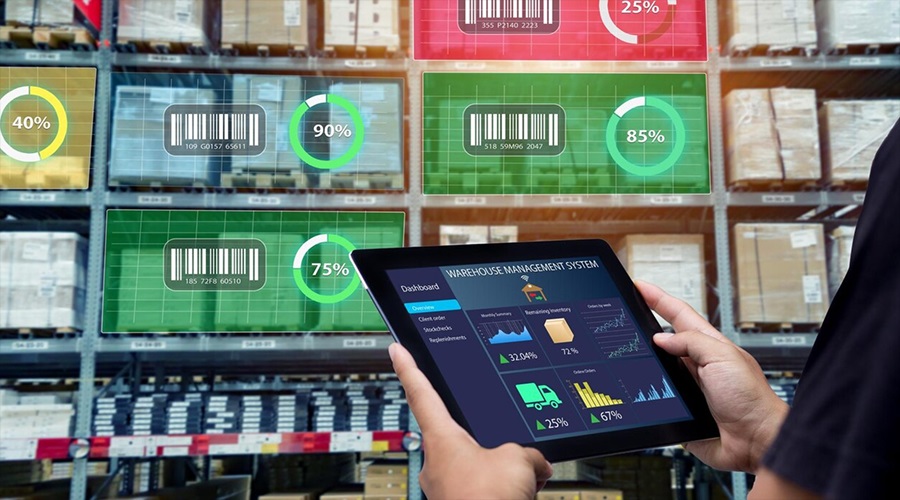
What Is Digital Shelf Optimization and Why It Matters
With shopping now moving through various digital touchpoints, the challenge of the brand is a new battleground the digital shelf. This digital real estate is not a single page, it is the total of all product interactions on the internet: how goods are placed on Amazon, how they are positioned on the site of your retailer. Digital Shelf Optimization ensures every one of those touchpoints is accurate, consistent, and compelling—no matter where the customer sees it.
Today shoppers do not make a linear progression. They hop among search engines, marketplaces, mobile applications, and social media and then decide. It only takes one product page with the incorrect image or an old price to realize the trust is lost. That disjunction may murder conversions and hurt brand credibility.
Poor digital shelf data also causes internal friction. Your marketing group can make changes to the description of a product but unless it is updated across all channels, confusion ensues. Sales drop. Retailers complain. Customers post bad reviews.
Why Brands Need Automation and Digital Shelf Analytics

That’s why digital shelf optimization is about more than good copy—it’s about managing complexity at scale. It implies having all SKUs consistent across platforms, having product titles aligned with search terms, descriptions with differentiators, and imagery with brand guidelines. It also entails verifying prices, specifications, and ratings of customers in all listings. In order to maximize their findability, brands should enhance their product listing to search engine algorithms. To be able to compete in the modern ecommerce environment, brands have to own their digital space, as well as online space and optimize it.
With dozens of markets to manage, brands such as STANLEY just cannot afford to remain manual. Structured systems and automation come in there to ensure that the updates of the content are rapid, precise, and implemented everywhere.
And in order to do that, the brands require visibility. They have to understand what their shelf looks like in real time within the digital ecosystem. That’s where Digital Shelf Analytics enters the picture.
Diagnosing the Shelf – How Digital Shelf Analytics Exposes Content Gaps
In a world where online sales depend on accuracy and consistency, brands can’t afford blind spots. This is where Digital Shelf Analytics becomes a game-changer. These tools help brands uncover the invisible cracks in their product listings across all digital sales channels—retailers, marketplaces, and even D2C platforms.
Category managers use analytics to monitor pricing strategies, such as iMAP, and analyze ratings and reviews to gain insights into online category trends, store-level data, and overall product performance. Digital Shelf Analytics provides a comprehensive measure of how each part of the customer journey is performing, while also offering an instant snapshot of store-level data for quick decision-making.
What Is Digital Shelf Analytics and What Problems Does It Solve?

Digital Shelf Analytics refers to specialized software that tracks, evaluates, and reports how your products perform across digital platforms. It collects and analyzes structured and unstructured digital shelf data—including pricing, product title accuracy, product details, product images, image quality, product descriptions, ratings, reviews, customer feedback, and user generated content. The aim is simple: expose any content gaps or inconsistencies before they impact your sales or reputation.
Let’s say your product appears correctly on your brand’s eCommerce site, but the listing on a major retailer lacks a key product image, has a misspelled product title, or displays outdated product details. Shoppers notice these errors—and competitors benefit. Digital shelf monitoring detects these issues in real time, so your team can act fast.
Key areas analytics tools monitor include:
- Inconsistent pricing across platforms
- Missing or outdated product images and visuals
- SEO inefficiencies like weak target keywords
- Product spec mismatches and inaccurate product details
- Review anomalies, poor star ratings, and negative customer feedback or user generated content
Digital shelf analytics metrics can benchmark the discoverability of products against competitors, providing actionable insights for improvement, especially by aligning listings with target keywords to enhance search performance.
And with digital shelf metrics for brands, you gain actionable KPIs to prioritize what needs fixing. Instead of manually auditing hundreds of SKUs, your teams receive precise reports showing where the brand presence is breaking down—and why.
Real-World Example: Content Gap Detection at Scale
A global personal care brand rolled out a seasonal promotion across 12 online retailers. Using a digital shelf analytics software, they discovered that six of those listings had outdated product images and incorrect promotional text. These errors had already cost them thousands in missed clicks and conversions.
With real-time alerts, they corrected the listings in under 24 hours. Result: a 17% increase in campaign engagement and a measurable uplift in digital shelf performance.
Such agility is only possible when brands pair monitoring with analytics. Otherwise, errors linger for days—or weeks—costing far more in lost sales than the fix itself.
Beyond Visibility: Why Insights Drive Performance
What sets modern digital shelf insights apart isn’t just tracking—it’s prioritization. Not every content issue has the same impact. For example, a missing bullet point on a niche SKU won’t hurt as much as a broken image on your best-selling product.
Smart analytics tools help teams decide where to focus first. Some platforms even benchmark your listings against competitors or market standards, creating a real-time ecommerce analytics loop that feeds decision-making.
More importantly, brands that integrate these insights into workflows can cut correction cycles in half and reduce error rates long term. By leveraging these strategies, brands can win sales by optimizing digital shelf performance, improving product visibility, and driving better sales outcomes.
The best analytics setups don’t just show what’s wrong—they guide how to fix it. But analytics alone can’t close the loop. That’s where Product Information Management (PIM) systems and automation take over.
Defining Success – Key Performance Indicators for the Digital Shelf
Defining success on the digital shelf starts with understanding which key performance indicators (KPIs) truly move the needle for your brand. As global ecommerce sales surge toward $8 trillion by 2027, brands must harness the power of digital shelf analytics to stay ahead. The right KPIs not only illuminate how your products are performing but also guide your digital shelf strategy, helping you boost product visibility, drive higher conversion rates, and deepen customer engagement.
The Metrics That Matter Most
To achieve digital shelf success, brands need to focus on the metrics that directly impact their bottom line. Share of search reveals how often your products appear in search results compared to competitors, while digital share of shelf measures your brand’s presence within key product categories. Customer loyalty, reflected in repeat purchases and positive reviews, signals the strength of your brand-consumer relationship. Product visibility—how easily shoppers can find your listings—remains a cornerstone of a winning digital shelf strategy.
Digital shelf analytics empower brands to optimize product listings by identifying which elements—such as high-quality images, relevant keywords, and compelling content—drive engagement and sales. Monitoring these KPIs across multiple channels ensures you maintain brand consistency and quickly address any gaps. Actionable insights from analytics help you refine pricing strategies, enhance content quality, and respond to customer behavior in real time. By leveraging these insights, brands can continuously improve their digital shelf presence, ensuring that every product listing is primed for discovery and conversion.
Setting Benchmarks for Brand Growth
Establishing clear benchmarks is essential for measuring and accelerating brand growth on the digital shelf. Start by defining your key performance indicators—such as conversion rates, share of search, product visibility, and customer satisfaction—and set specific, measurable goals for each. Use historical data to understand past performance, then track progress as you implement new tactics.
For example, you might set a goal to increase your share of search by 20% over the next quarter, or to boost customer satisfaction scores by enhancing product descriptions and adding rich content to your listings. Regularly reviewing these benchmarks allows you to spot trends, identify opportunities, and address challenges before they impact your digital shelf presence. By aligning your digital shelf strategy with these KPIs, you can drive sustained growth, foster deeper customer engagement, and ultimately win on the digital shelf.
Automating the Fix – The Role of PIM and AI in Digital Shelf Optimization
Finding what’s broken on your digital shelf is one thing. Fixing it across hundreds of listings, in multiple languages, on dozens of platforms? That’s where most brands fall short. Digital Shelf Optimization only delivers real value when detection is followed by automated correction—and that’s the role of AI and PIM systems. Managing listings across platforms also means optimizing product visibility and performance across each online store.
At its core, a Product Information Management (PIM) system stores and manages every piece of product content. It allows brands to deliver consistent, localized, and fully enriched listings to any channel. But when paired with Digital Shelf Analytics, it transforms into a command center for continuous improvement. Digital shelf analytics can also inform direct to consumer strategies by providing market intelligence and competitive insights. Monitoring competitive pricing is essential for optimizing product visibility and conversion rates. Additionally, content optimization should focus on creating compelling product content to engage customers throughout their decision-making process.
AI-Powered Optimization at Scale
Modern PIMs equipped with AI don’t just organize data—they enhance it. AI tools can suggest SEO-rich titles, complete missing fields, and even flag errors based on comparison with competitor benchmarks or digital shelf analytics providers. Product Information Management (PIM) solutions provide a single source of truth for all product-related data, ensuring consistency and accuracy across platforms. These insights help teams spot invisible inconsistencies that human eyes might miss.
Thanks to real-time integrations with shelf data and analytics, teams can monitor content performance and automatically trigger updates. These tools also help track and enhance the product’s performance across digital channels, ensuring better visibility and sales outcomes. A low image score or outdated keyword tag? AI can suggest fixes—or apply them instantly.
This automation dramatically improves scalability. With thousands of SKUs in motion, manual updates just aren’t viable. PIM systems powered by analytics remove the guesswork, streamline updates, and reduce time to correction from days to hours. PIM enables brands to edit digital shelf content in batches, streamlining updates across various online platforms.
Automation Enhances Retailer Customization
Different retailers have different content rules. Whether it’s a unique image ratio for Amazon, a specific title length for Walmart, or required bullet points for a niche marketplace, compliance becomes complex.
That’s where digital shelf software and PIM come together. You can create templates that auto-adjust content based on the channel’s specs. This reduces content rejections and ensures every SKU is optimized to perform—on every shelf.
AI can also assist with content translation and localization, using smart tools to adapt language while keeping product messaging aligned with brand tone.
Connecting Key Digital Shelf Metrics with Ecommerce Strategy
When you pair shelf monitoring with ecommerce analytics: analyze and improve the impact of your digital strategy, you start measuring more than just clicks—you assess how shelf quality influences long-term ROI.
Instead of guessing what drives conversions, brands get to see the direct impact of better content. Improved title clarity? +12% CTR. Higher-quality images? +8% add-to-cart rate. These are the metrics that modern ecommerce teams live by.
And if you’re unsure what the digital shelf meaning is for your specific vertical—start with your customers. What they see is your shelf. If it’s inconsistent, incomplete, or outdated, they’ll scroll on. A well-managed digital shelf ensures that products are being discovered and sold effectively. That’s why digital shelf ecommerce isn’t about placement—it’s about perception.
To take full control, we recommend Digital Shelf Monitoring: A Robust Solution For Brands. It offers an end-to-end system that pairs analytics with action—ensuring your shelf not only looks good but performs like it should.
For deeper insights into digital shelf analytics and the latest ecommerce trends, watch our on-demand webinar featuring expert speakers.
Inventory in the Spotlight – Managing Stock for Digital Shelf Excellence
Inventory management is a critical pillar of digital shelf excellence, directly influencing product availability, customer satisfaction, and overall sales performance. In the fast-paced world of ecommerce, where shoppers expect instant access to products and seamless experiences, brands must prioritize real-time inventory visibility to maintain a competitive edge and deliver on customer expectations.
Real-Time Inventory Visibility
Real-time inventory visibility is a potential game changer to keep your products on the shelf, avoid expensive stockouts, and make sure your offerings are front and center on the digital shelf. By integrating digital shelf analytics with robust product information management (PIM) software, brands gain instant access to inventory data across all channels. This allows them to manage the stock levels proactively, replace stock on time and strategic location of products.
Real-time insights enable brands to get the most out of their product listings, reflecting real-time availability, dynamic pricing models to sell slow-moving stock and enhance search ranking by keeping products in view and available to buy. More accurate inventory information also allows making more informed product placement decisions and therefore prioritizing more important products on category pages and showing as many as possible. By leveraging PIM software and digital shelf analytics, brands can reduce the risk of overselling, enhance customer satisfaction, and drive consistent sales growth through optimized product visibility and availability on every digital shelf.
Conclusion
Digital Shelf Optimization is no longer optional—it’s a strategic necessity for modern brands competing in a crowded online marketplace. With the right combination of Digital Shelf Analytics, automation, and a powerful PIM system, businesses can ensure their product content is always accurate, optimized, and performance-driven. As shopper expectations rise, brands that invest in shelf data and analytics gain a decisive edge—delivering consistent experiences and boosting conversions. Don’t just monitor your shelf—optimize it. Start by exploring Digital Shelf Monitoring: A Robust Solution For Brands to future-proof your digital presence across every channel.






